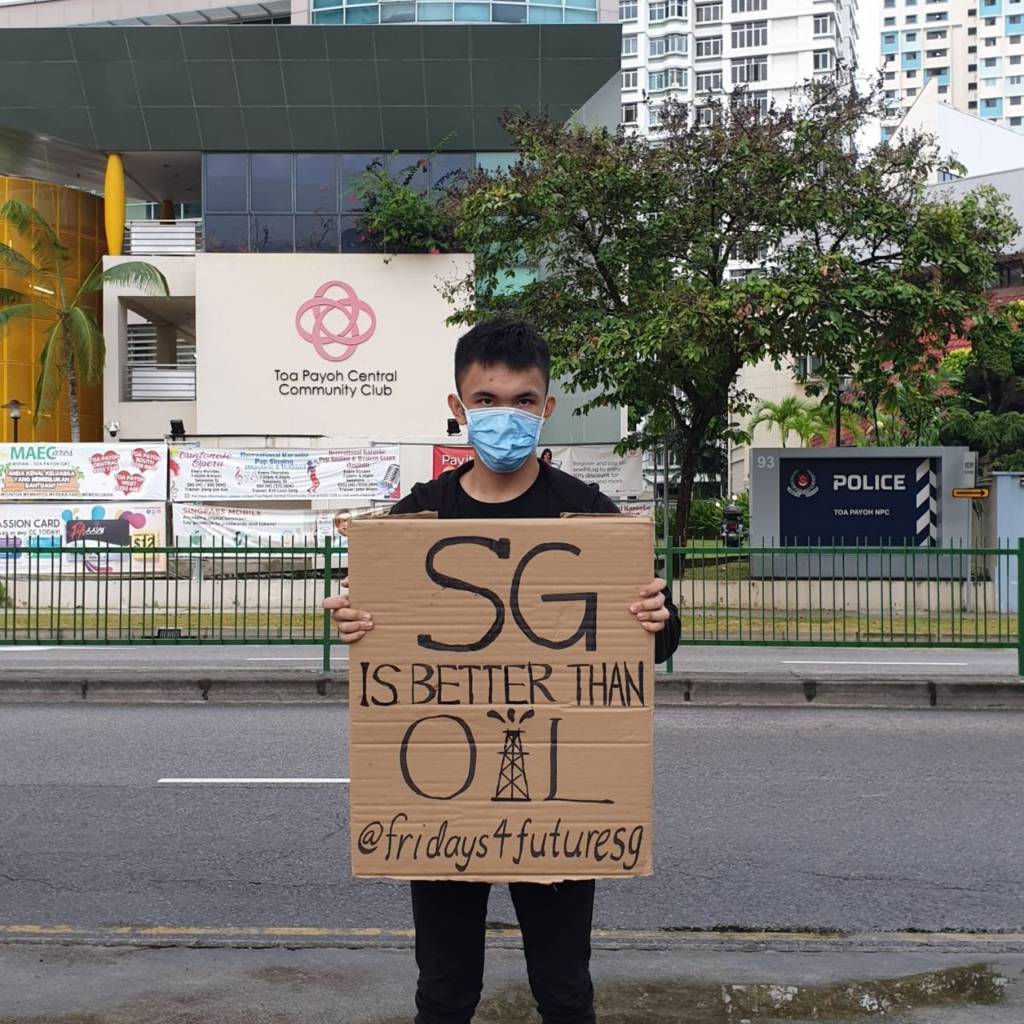“Wow this girl has 9,000 followers, she seems like a big deal”.
It was October 2018 when I messaged Greta Thunberg on Instagram. I don’t think she even saw it. For a year, I bounced around different climate activist groups saying that I definitely wanted to go on strike, but I definitely wasn’t allowed to. I was about to serve two years as a conscript, and striking in the army is practically treason.
It’s awkward explaining to Greta Thunberg, FridaysForFuture and Extinction Rebellion that although you want to help, protesting isn’t really a thing. In Singapore, public assemblies and processions by even a single person requires a police permit. Unlike other countries which protect the right to protest on public grounds, Singapore actively restricts such demonstrations. It turns protesting from a right into a closely monitored privilege. The police don’t particularly need a reason to deny a permit. So instead of “it’s your right”, the question is “will it be non-offensive enough to be approved?”.
But it’s not the law that stops protests in Singapore. It’s self-censorship. Every country considers itself unique and in Singapore, protests are seen as something that just can’t happen. Singaporeans associate protests with Hong Kong and how Singapore could never handle chaos that will destroy its economic prosperity. As for school strikes, that’s even more taboo. Academic success is the greatest priority of any young Singaporean, at least according to Singaporean parents. Protesting is not something students do, period. Singapore’s last student strikes occurred in 1974, and the organisers are still in exile.
You might be wondering: If I knew all this, how did I eventually end up holding a sign and being questioned for ten hours by the police?
Like many activists, I did it because someone else did it first. On March 13 2020, J-Min, an 18-year old high school student held a piece of paper that said “Exxon Kills Kittens” outside ExxonMobil’s offices and posted it online as “Fridays4FutureSG”. For context, “FridaysForFutureSG” was taken by at least two other groups, both of which were inactive.
Later that day, I messaged her and we spent the next week co-founding Fridays4Future SG. I went out with a sign a week later. I figured that whatever happened, the movement could not stop at just one person. That one person should not face this alone. If so, every potential climate striker in Singapore would learn about what happened to the first climate striker, and they’d whisper to themselves that protesting for the environment is dangerous. That protesting destroys your future career prospects, which is the most important thing in Singaporean society. Then they’d repeat that idea to everyone else they know. And thus, a self-fulfilling prophecy that protesting for climate change never happens in Singapore. Singaporean activists have a term for it: Killing the chicken to scare the monkeys.

But if it wasn’t just one person. If there was a second. And a third. And a tenth. If there were Singaporeans who see the immense threat that climate change poses to everyone’s future. That although it may seem like Singaporeans don’t care about climate change, some are willing to stand up for it despite the risks, real and perceived. That if you do it, there are others alongside you.
In my case, there’s been about two hundred people since last week. After my investigation was publicised, a local activist named Jolovan Wham held up a smiley face sign in solidarity. On May 24, he was called in for questioning. Since then, hundreds of Singaporeans have posted photos of themselves holding smiley face signs, tagging #smileinsolidarity and asking the question: why was holding a smiley face sign even worth investigating? Two petitions have been drafted, one calling for an end to the investigation and another calling for loosening of restrictions on public assembly.


The global community in solidarity with climate activists in Singapore. Source: @fridays4futuresg on Instagram
Honestly, I don’t know where all this leads. I just knew that I couldn’t stay silent about climate inaction. That when I was sixty years old and watching the news about the latest wildfire, flood or typhoon, a child would ask me what climate change is. And then they’d ask me why no one did anything. I couldn’t look them in the eye and tell them, as adults tell me now, that we couldn’t. I’d know what a lie that is. So I did what I could, even if I didn’t know what that was.
So if you’re stuck at home without the slightest clue of how to become a climate change activist, just know that confusion is completely normal. It’s not like Greta Thunberg expected to launch a global movement on her first Friday at Swedish Parliament. Say what you believe in and, with some planning, effort and luck, other people will join. If you’re stuck on how to create and lead an activist group, ask the existing ones. There will be a lot of uncertainty. But if you care, it’s certainly worth trying.